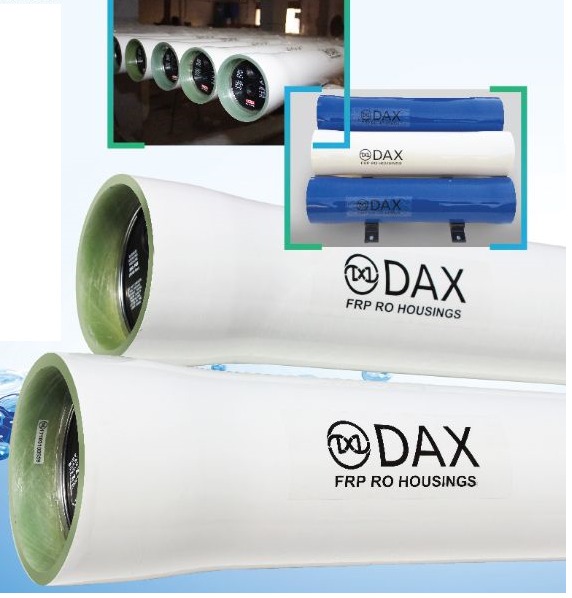RO Pressure Vessel
RO membrane housing, also known as a membrane pressure vessel or RO membrane housing assembly, is a vital component in a reverse osmosis (RO) water purification system. It serves to protect and encase the RO membrane element while maintaining the required pressure for the filtration process. Here are the key aspects and functions of RO membrane housing:
Encasement and Protection: The primary function of an RO membrane housing is to encase and protect the delicate RO membrane element, which is susceptible to damage from physical stress, debris, and external contaminants.
Pressure Retention: RO membrane housings are designed to withstand the pressure required for the RO process. They help maintain the pressure differential across the membrane, allowing the water to flow through the membrane while impurities and contaminants are rejected.
Construction: These housings are typically made from durable materials, such as reinforced plastics (e.g., polypropylene or fiberglass-reinforced polyester) or stainless steel, ensuring that they can withstand the pressure, corrosive conditions, and wear and tear in RO systems.
Inlet and Outlet Ports: RO membrane housings have inlet and outlet ports that allow the flow of feed water into the housing and the discharge of purified water and concentrated brine water. These ports are usually threaded to accommodate fittings and connections.
End Caps: RO membrane housings are equipped with end caps at each end to seal the housing and prevent leaks. These end caps often include seals or O-rings to ensure a watertight connection.
Permeate and Concentrate Ports: Within the housing, there are typically separate ports for permeate (purified water) and concentrate (brine) to exit the housing, directing each stream to its respective path.
Clamps or Pressure Vessels: Depending on the system's design, RO membrane housings can be secured with clamps, pressure vessels, or other fastening mechanisms to ensure they remain securely sealed.
Transparency: Some RO membrane housings have a transparent section that allows users to visually inspect the condition of the membrane element without disassembling the housing.
Multi-Element Housings: In industrial and commercial RO systems, you can find multi-element or multi-cartridge housings that house multiple RO membrane elements within a single housing. This design allows for increased filtration capacity and efficiency.
Compatibility: It's crucial to select RO membrane housings that are compatible with the specific RO membrane elements in terms of size, dimensions, and specifications.
Maintenance: Regular maintenance of RO membrane housings includes inspecting for signs of damage, leaks, or wear, as well as cleaning or replacing O-rings and seals to ensure a watertight seal.
RO membrane housings are critical for the proper operation and longevity of RO systems. They provide a protective barrier for the sensitive RO membrane element while maintaining the pressure necessary for the filtration process. These housings are available in various sizes and configurations to accommodate different RO system capacities and requirements, making them suitable for residential, commercial, and industrial water purification applications.


